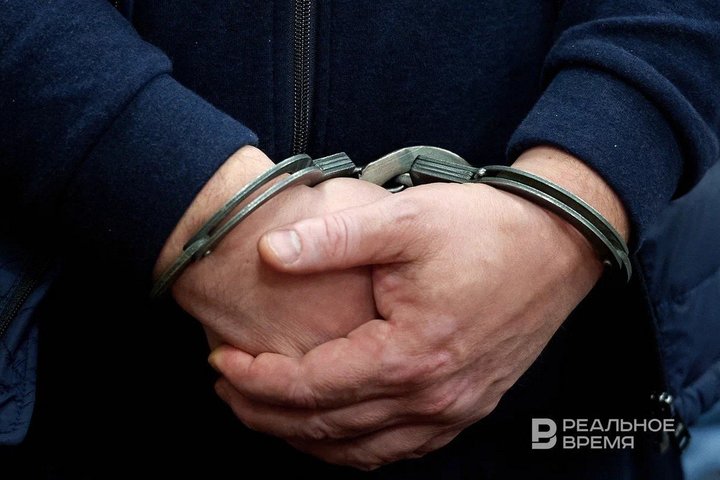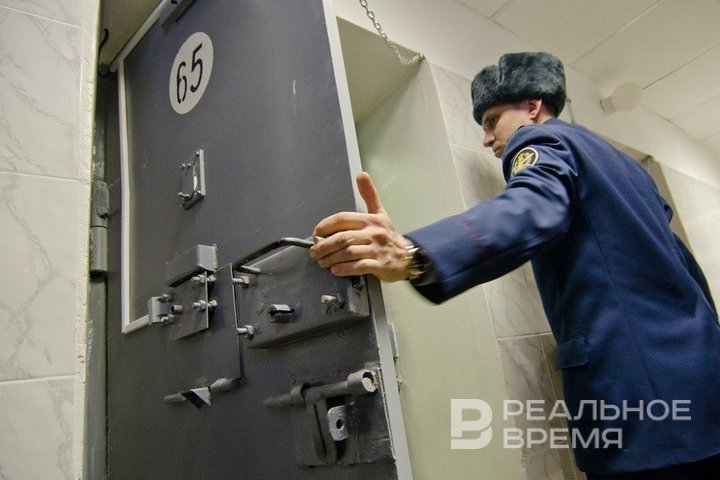Grave crime rates increase sharply in Tatarstan
Although there are fewer murders, robberies, and thefts overall, the number of extortions has increased

The number of identified criminals in Tatarstan has halved — the figure has dropped from 14,700 to 7,000, and the number of juvenile offenders has decreased by 71%. Data for the past decade and a half was provided to the Russian Ministry of Internal Affairs. However, against the backdrop of this progress, the republic has faced a sharp increase in serious and especially serious crimes, an increase of 16% compared to the 2010 level. This alarming trend sets the region apart from the overall Russian decline in such crimes.
The number of crimes is decreasing, but slowly
Russia has updated its crime statistics, and the Ministry of Internal Affairs data can be studied in the context of recent decades. It turned out that the number of identified criminals in Tatarstan has decreased by more than half: from 14,700 people in January-June 2008 to 7,000 in the same period of the current year.
The total number of registered crimes in the republic is also decreasing, but at a slower pace than the average for Russia and the Volga Federal District. In the first half of this year, 941 thousand crimes were registered in the country, or a third less than 15 years ago, when there were 1.4 million (-31.7%).

A significant decrease in crime is also observed in the Volga region. In January-June 2025, 185,500 crimes were registered, while in the first half of 2010 their number reached 284,000 (-34.7%).
In Tatarstan, the decrease is not so significant. In the first half of this year, 26,000 crimes were detected, and 15 years ago — 30,000 (-12.3%).
The number of serious crimes is growing
The negative trend of worsening crime situation distinguishes our republic in other indicators as well. Thus, if in the country and the district the number of serious and especially serious crimes is decreasing, then in Tatarstan, on the contrary, their number has increased significantly.
In the first half of the year, 333,000 serious and especially serious crimes were registered in Russia. This is 12% less than in the same period of 2010, when there were 379 thousand. In the Volga Federal District, an even more significant decrease is observed: from 72,000 to 57,000, that is, by about 20%.
However, Tatarstan demonstrates the opposite dynamics. In January-June 2025, 8,000 serious and grave crimes were registered, or 16% more than in 2010, when there were 7,000.

Fewer criminals, including among children and women
The number of identified criminals has decreased over the past decades, and here Tatarstan was in line with the general trend (see the beginning of the article), with a 52% decrease. This year, 318,000 people who broke the law were identified in Russia, while in 2008 there were twice as many — 669,000. During the same period, the number of identified criminals in the Volga region decreased from 134,000 to 55,000, or almost 60%.
Positive trends include a sharp reduction in juvenile crime. In Russia, the number of juvenile criminals decreased from 59,000 to 10,500, that is, almost six times. Their number has decreased by the same amount in the Volga region — from 12,000 to 2,000.
In Tatarstan, the number of juvenile offenders has also decreased significantly — 323 people against 1,117, or 71% less.
The number of women who have committed criminal acts in Russia has decreased — 63,000 in the first half of 2025 against 110,000 for the same period in 2008. In the Volga region, the figure has decreased from 21,000 to 11,000, and in Tatarstan — from 2,000 to 1,300.
At the same time, if earlier in the republic women made up about 13.8% of the total number of criminals, now their share has grown to 18.6%.
Victims
There are fewer victims at the hands of criminals. In Russia, their total number decreased from 2.3 million in 2008 to 1.4 million in 2024, and among citizens — from 2 million to 1.2 million. A similar picture is in the Volga region: there were 552,000— now 296,000, among individuals there were 486,000 — now 243,000.

In Tatarstan, the number of victims of crimes is also decreasing, although with some fluctuations. The total number decreased from 62,000 to 42,000, and among citizens — from 54,000 to 36,000. This decrease is a direct consequence of the decrease in the total number of registered crimes.
Despite the reduction in juvenile crime, the dynamics of the number of juvenile victims looks less clear-cut and demonstrates the continuing vulnerability of this group of the population. In Tatarstan, the number of victims among children decreased from 3,600 to 2,400, that is, by 33%.
In general, in Russia, the decrease was less significant. In 2008, 118,000 minor victims were registered, and in 2024 — 108,000 (-9%). In the Volga region there were 28,000 children in this category, and now there are 24,000 (-17%).
The number of deceased recognized as victims in Tatarstan demonstrates relative stability or even fluctuations, which contrasts with the general crime reduction. In 2008, there were 373 deaths, and in 2024 — 462, with a peak of 808 in 2014.
This trend differs from the federal and district trends, where the number of deaths from crimes is generally decreasing. Thus, over 16 years in Russia, the number of deaths from crimes has decreased from 33,000 to 24,000. The peak also occurred in 2014, when almost 33,000 people died from crimes. In the Volga Federal District, the number of deaths from crimes decreased over the same period from 7,000 to 3,800.
Fewer thefts and murders, more extortion
The most significant contribution to the overall reduction in registered crimes is made by the reduction in the number of thefts (Article 158 of the Criminal Code of the Russian Federation). They traditionally make up the largest volume among all registered offenses. In Tatarstan, the number of thefts has decreased significantly from 34,800 in 2008 to 13,800 in 2024. Similar large-scale reductions are observed at the federal level (from 1.3 million to 0.5 million) and in the Volga Federal District (from 286,000 to 96,000).
As noted earlier, the total number of serious and especially serious crimes in Tatarstan is growing, in contrast to federal and district trends. However, a detailed analysis shows that this growth is not due to an increase in the number of traditional violent crimes, such as murder or intentional infliction of serious bodily harm.
On the contrary, Tatarstan has seen a significant decrease in these categories:
- Murders (Article 105 of the Criminal Code of the Russian Federation): decreased from 321 cases in 2008 to 134 in 2024.
- Intentional infliction of grievous bodily harm (Article 111 of the Criminal Code): decreased from 771 cases in 2008 to 359 in 2024.
- Robbery (Article 162 of the Criminal Code): decreased from 652 in 2008 to 78 in 2024.
- Theft (Article 161 of the Criminal Code): decreased from 4,651 in 2008 to 365 in 2024.
Against the background of a general decrease or stability of many types of crimes, extortion (Article 163 of the Criminal Code) in Tatarstan shows an upward trend. In 2008, 385 cases of extortion were registered, and in 2024 their number increased to 547.
This trend diverges from the federal dynamics, where extortion in general is decreasing (for example, from 9,900 to 7,900). Such a specific increase in extortion, even with a decrease in other types of crime, indicates a special area of concern in the criminal landscape of Tatarstan.